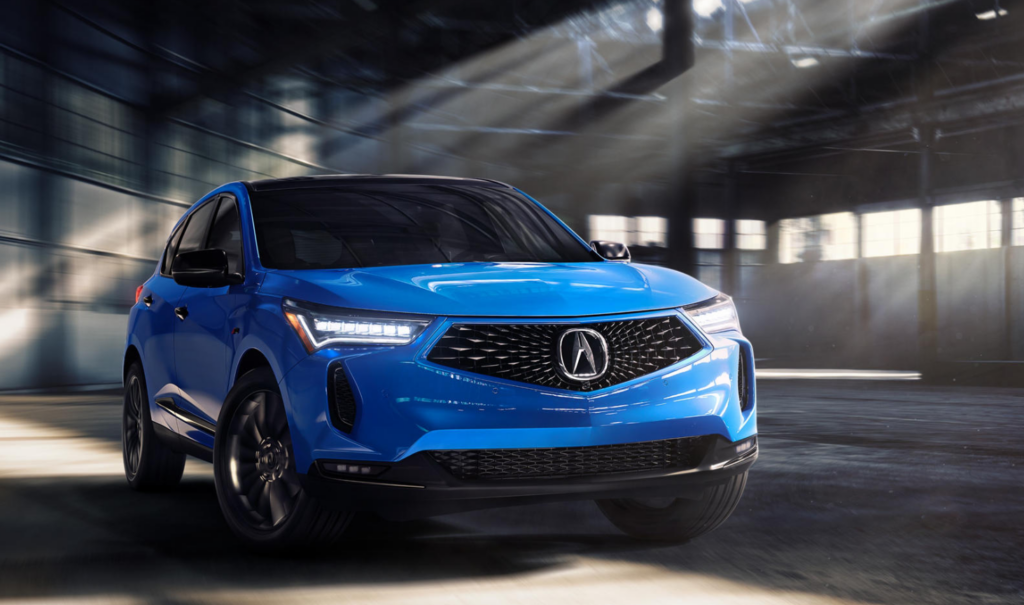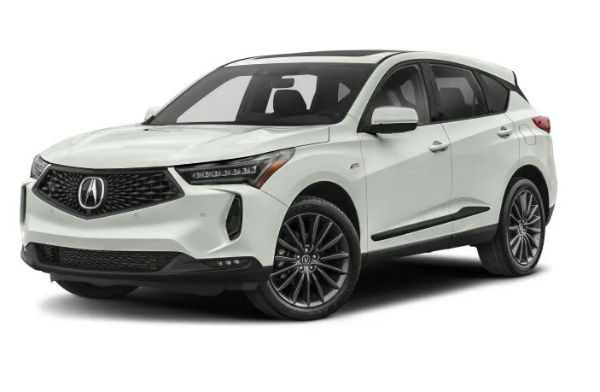
The 2025 Acura RDX: A Look at Fuel Efficiency and Power
The Acura RDX, a popular luxury compact crossover, has consistently impressed drivers with its sleek design, sophisticated interior, and powerful performance. As we approach the 2025 model year, anticipation is high for what Acura has in store. While official details remain under wraps, speculation and industry trends point towards a potential shift in the RDX’s fuel landscape, with a focus on enhanced efficiency and sustainability.
This article will delve into the potential fuel options for the 2025 Acura RDX, exploring the benefits and drawbacks of each, and considering the broader context of the automotive industry’s move towards electrification.
The Current Landscape: A Turbocharged Powerhouse
The current 2023 Acura RDX is powered by a 2.0-liter turbocharged four-cylinder engine, producing a respectable 272 horsepower and 280 lb-ft of torque. This engine, paired with a 10-speed automatic transmission, offers a compelling blend of performance and fuel economy, achieving an EPA-estimated 22 mpg city, 28 mpg highway, and 25 mpg combined.
While these figures are competitive in the luxury crossover segment, the pressure to enhance efficiency is mounting, driven by factors like rising fuel prices, environmental concerns, and government regulations.
A Glimpse into the Future: Potential Fuel Options
As we move into the 2025 model year, Acura is likely to explore various fuel options to meet these evolving demands. Here’s a breakdown of the most probable scenarios:
1. Enhanced Gasoline Engine:
Acura could opt to refine the existing 2.0-liter turbocharged engine, incorporating technologies like direct injection, variable valve timing, and cylinder deactivation to improve fuel efficiency without compromising power. This approach would build upon the existing platform, offering a familiar driving experience with improved fuel economy.
Benefits:
- Familiar Performance: Drivers accustomed to the RDX’s current powertrain would experience a smooth transition.
- Cost-Effective: Refining an existing engine is generally less expensive than developing a completely new powertrain.
- Wide Availability: Gasoline remains the most widely available fuel source, making it a practical option for many drivers.
Drawbacks:
- Limited Efficiency Gains: While improvements are possible, the inherent limitations of gasoline engines might not satisfy the increasing demand for fuel efficiency.
- Environmental Concerns: Gasoline combustion remains a significant contributor to greenhouse gas emissions.
2. Hybrid Technology:
The integration of hybrid technology, combining a gasoline engine with an electric motor, is a popular strategy among automakers seeking to enhance fuel efficiency. This approach could see the RDX adopting a mild-hybrid system, where the electric motor assists the gasoline engine, or a full-hybrid system, allowing for electric-only driving for short distances.
Benefits:
- Improved Fuel Economy: Hybrid systems significantly reduce fuel consumption, particularly in city driving.
- Reduced Emissions: Hybrid vehicles produce lower greenhouse gas emissions than conventional gasoline cars.
- Smooth Performance: Electric motors provide instant torque, enhancing the driving experience.
Drawbacks:
- Increased Complexity: Hybrid systems add weight and complexity to the vehicle, potentially impacting performance and handling.
- Higher Initial Cost: Hybrid vehicles typically have a higher sticker price compared to their gasoline-only counterparts.
3. Plug-in Hybrid (PHEV):
A more aggressive approach could see the 2025 RDX adopt a plug-in hybrid powertrain. This system allows for extended electric-only driving range, making it ideal for daily commutes and reducing reliance on gasoline.
Benefits:
- Significant Fuel Savings: PHEVs offer the most significant fuel economy gains among hybrid options.
- Reduced Emissions: PHEVs generate significantly lower emissions compared to gasoline-only vehicles.
- Electric-Only Driving: The ability to drive on electricity alone for extended periods reduces reliance on gasoline.
Drawbacks:
- Higher Cost: PHEVs are the most expensive option, both in terms of initial purchase price and battery replacement costs.
- Charging Infrastructure: Access to charging stations remains a concern in some areas, potentially limiting the practicality of PHEVs.
4. Fully Electric Powertrain:
Acura could take a bold step and introduce a fully electric RDX for the 2025 model year. This would position the brand as a leader in the rapidly growing electric vehicle market.
Benefits:
- Zero Tailpipe Emissions: Fully electric vehicles eliminate greenhouse gas emissions from tailpipe exhaust.
- Quiet and Smooth Operation: Electric motors provide a silent and smooth driving experience.
- Potential for High Performance: Electric powertrains can deliver impressive acceleration and torque.
Drawbacks:
- Limited Range: Current battery technology limits the driving range of electric vehicles, requiring frequent charging.
- High Initial Cost: Electric vehicles are currently more expensive than comparable gasoline-powered vehicles.
- Charging Infrastructure: The availability of charging stations remains a key challenge for widespread electric vehicle adoption.
Beyond Fuel: The Evolving Landscape of Automotive Technology
The 2025 Acura RDX’s fuel type is just one aspect of the broader automotive landscape undergoing rapid transformation. Here are some key trends shaping the future of driving:
- Autonomous Driving: Advancements in artificial intelligence and sensor technology are paving the way for autonomous vehicles, promising enhanced safety and convenience.
- Connectivity: Vehicles are becoming increasingly connected, allowing for real-time information sharing, remote control, and advanced safety features.
- Sustainability: The automotive industry is prioritizing sustainability, with a focus on reducing emissions, improving fuel efficiency, and utilizing recycled materials.
- Personalized Experiences: Automakers are developing features that personalize the driving experience, from customized entertainment systems to adaptive comfort settings.
Conclusion: A Glimpse into the Future
The 2025 Acura RDX is poised to embrace the evolving automotive landscape, offering a blend of performance, efficiency, and technological innovation. While the exact fuel type remains uncertain, it’s likely to be a combination of gasoline and electrification, reflecting the industry’s shift towards a more sustainable future.
Whether Acura chooses a hybrid, plug-in hybrid, or fully electric powertrain, the 2025 RDX is expected to offer a compelling driving experience that balances performance with efficiency, catering to the evolving needs and expectations of luxury crossover buyers.
The journey towards a more sustainable automotive future is ongoing, and the 2025 Acura RDX is likely to play a significant role in shaping this journey, offering drivers a glimpse into the exciting possibilities that lie ahead.







